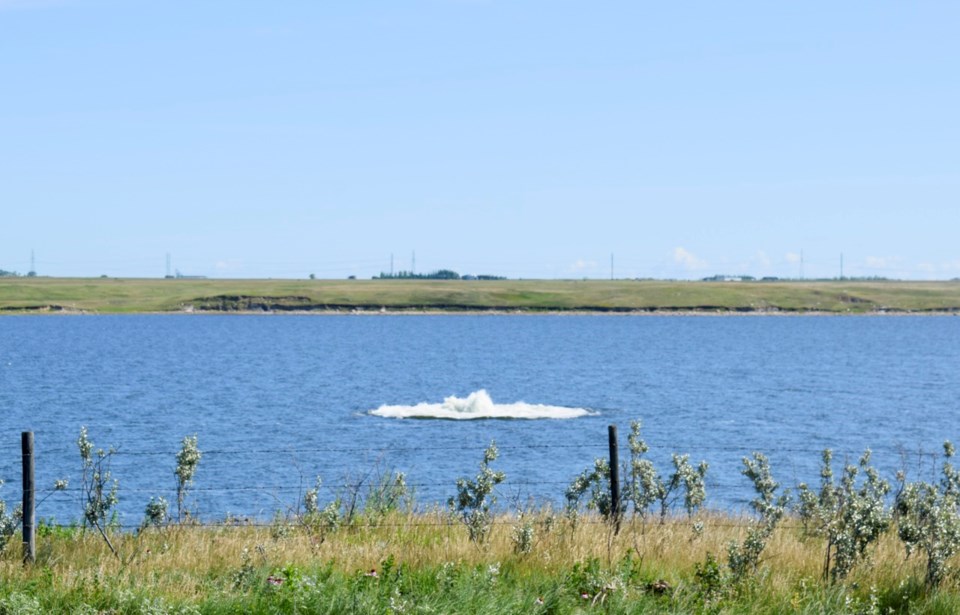It's been over a month since Estevan started receiving raw water from Rafferty Dam instead of Boundary. The water intake project that was completed this summer allowed the community to switch to a new source and thus benefit from better quality water.
The Mercury talked to Shane Bucsis, water and wastewater manager with the City of Estevan, about the first weeks of operation of the new line.
"We've seen the difference in water quality. The hardness has dropped substantially in the city water. All organics are a lot lower, the minerals in the water are a lot lower. So all in all it's proving to be very good," Bucsis said.
For the customers, these changes would mean that the water is a lot softer, so it now takes less salt. Their fixtures and house appliances that use water should now last longer. Bucsis also noticed that the new water doesn't have the aftertaste and thus tastes better.
There was a minor hiccup during the first days of operation, however, the staff successfully overcame it.
"Initially when we switched over we didn't have proper chemicals in here to treat it. We did a whole bunch of testing beforehand and we thought we did (have the chemicals). And it was one of the things that you find out when you go online," said Bucsis.
"We still provided very safe drinking water, it was just the efficiency of providing that water that decreased."
They got the proper chemical in within a week and a half, and ever since it's been going well.
"Our potable water quality has improved immensely. I am happy to say that we are well below the trihalomethane (THM) guidelines," Bucsis said.
The latest water testing results showed that the water THMs were at 69.1 microgram/l (ug/l) as opposed to 147.5 ug/l from the water sample from Boundary for the same period. Bucsis said that once Estevan gets into winter months, this differential will be reduced even more.
All other minerals, chemicals and organics are coming in at least half or lower than what they were on the Boundary Dam water source. For example, haloacetic acid was at 0.0261 ug/l as opposed to 0.0810 ug/l at Boundary; conductivity was at 839 uS/l as opposed to 1605 uS/l. Total hardness was at 230 calcium carbonate compared to 468 at Boundary. Calcium was at 56 milligrams per litre (mg/l) and at Boundary it was 86 mg/l; magnesium was 33 mg/l and used to be at 61 mg/l, sodium was 74 mg/l as opposed to 205 mg/l, sulphate was 174 mg/l as opposed to 571.9 mg/l. And total dissolved solids were at 659 mg/l as opposed to 1315 mg/l at Boundary.
Bucsis added that now they are working with a full pumphouse, which is somewhat new to them since before it was a gravity-fed system, so it's been a bit of a learning curve. In the meanwhile, the community kept receiving its water without any noticeable issues.
"It's more of operational stuff that we've been dealing with. For the water that goes out and what people notice, there haven't been any interruptions to them whatsoever, which is very good."
In August, more than 223.7 million litres of water were treated and more than 191.6 million litres were pumped into the distribution system. There were no plant upsets and all regulated parameters were below government regulations.
Bucsis said that all he's been hearing from the community was that everybody was pretty happy about the new water, they like the taste better and realize that they are not using as much shampoo or using too much shampoo. He was grateful for the help, patience and support they received while working on the water intake project.
"Thanks everyone for helping out with the project, being patient with it," said Bucsis.
Earlier last week, one of the settling ponds located beside the water treatment plant had residuals removed for the second time. About 168,000 kilograms of byproduct, which equates to about 15 large school buses or 110 mid-size cars, were removed. Prior to this, it would have been pumped into the Souris River.
The video of the process can be found at the City of Estevan Facebook page.




